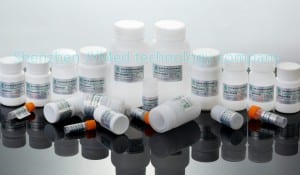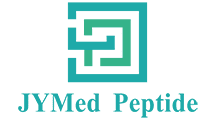There are few hypotheses on how statins influence ADMA levels. One of them concerns the inhibition of ADMA-induced inflammatory reaction, modulated by mitogen-activated protein kinase (MAPK) pathway in human endothelial cells44. Statins also activate the transcription factor sterol response element binding protein (SREBP) through decreasing content of the cholesterol in the membrane45. SREBP specifically enhances the expression of more than 30 genes associated with the synthesis and uptake of fatty acids, phospholipids, cholesterol and triglycerides46. One of its isoforms – nuclear SREBP-2 increases the transcription of proprotein convertase subtilisin/kexin type 9 (PCSK9)47. It has been shown that statins upregulate both PCSK9 mRNA levels and LDLR via activation of sterol-mediated SREBP-2, an important activator of DDAH transcription and activity48. Since reduced DDAH activity is linked to endothelial dysfunction, we speculate that statin therapy might decrease ADMA levels through multiple mechanisms such as activation of sterol-mediated SREBP-2, increasing of transcription of PCSK9 or by decreasing ADMA-induced inflammatory reaction, modulated by MAPK49,50.
Paschoal, M. A., Trevizan, P. F. & Scodeler, N. F. Heart rate variability, blood lipids and physical capacity of obese and non-obese children. Arq Bras Cardiol 93, 239–46 (2009).
There are opinions that glycine uptake influences the precipitation rate of aspirin.https://www.thieme-connect.com/products/ejournals/abstract/10.1055/s-2005-870853 Translation: “Salicylic acids are coupled to glycine by peptides and as salicyluric acid renally eliminated. The precipitation rate ( rate at which a substance is removed from the body) at higher concentrations of aspirin is dependent on the amount of available glycine. One can suppose, that the uptake of glycine helps to lower the concentration of aspirin. Comparing examinations about effects and side effects should therefore orient themselves on the blood concentration and not the dosis uptake.”
Niedbala, W. et al. Regulation of type 17 helper T-cell function by nitric oxide during inflammation. P. Natl. Acad. Sci. 108, 9220–9225 (2011).

It is believed that the NDMA contamination could have resulted from changes that Zhejiang Huahai made to its manufacturing process in 2012, using a method that was patented in 2014 (12) to reduce waste and improve product yield.
Adeona Pharmaceuticals, Inc. (AMEX: AEN) is a pharmaceutical company developing new medicines for serious central nervous systems diseases. Our primary strategy is to license clinical-stage drug candidates that have already demonstrated a certain level of clinical efficacy and develop them to a valuation inflection point resulting in a significant development and marketing collaboration. We have four drug candidates and one medical food candidate in development.
To provide clue to understand the molecular mechanisms of each drug, we analyzed the functional distribution of these differentially expressed proteins in different groups, and the results are illustrated in Fig. 4b, wherein the proportion of each function regulated by a drug treatment is shown by the pie charts. In QSYQ, the proteins involved in energy metabolism and oxidative stress accounted for 41% and 22%, respectively, with the highest significance, indicating these two processes as the main mechanisms for the therapeutic function of QSYQ. The functional distribution of these differentially expressed proteins varied among different mono-therapies, with ASIV mainly affecting energy metabolism (41%), DLA mainly affecting oxidative stress process (44%), R1 affecting energy metabolism (37%) and DO affecting ion transport process (40%) or protein modification (40%). Interestingly, all combination treatments acted on the proteins implicated in energy metabolism and oxidative stress as their major targets.
Our commercial success will depend in part on obtaining and maintaining patent protection and trade secret protection of our current and future product candidates and the methods used to develop and manufacture them, as well as successfully defending these patents against third-party challenges. Our ability to stop third parties from making, using, selling, offering to sell or importing our products depends on the extent to which we have rights under valid and enforceable patents or trade secrets that cover these activities. We believe that our patents provide broad and comprehensive coverage for the use of Aramchol for the treatment of certain liver diseases and other metabolic diseases. However, the patent positions of biopharmaceutical companies, such as ourselves, are generally uncertain and involve complex legal and factual questions. Our ability to maintain and solidify our proprietary position for the technology will depend on our success in obtaining effective claims and enforcing those claims once granted. There is no certainty that any of the Company’s pending patent applications will result in the issuance of any patents. The issued patents and those that may be issued in the future, may be challenged, narrowed, circumvented or found to be invalid or unenforceable, which could limit our ability to stop competitors from marketing related products or the length of term of patent protection that we may have for our products. In addition, our competitors may independently develop similar technologies or duplicate any technology developed by us, and the rights granted under any issued or future patents may not provide us with any meaningful competitive advantages against these competitors. Furthermore, because of the extensive time required for development, testing and regulatory review of a potential product, before any of our products can be commercialized, any related patent may expire or remain in force for only a short period following commercialization, thereby reducing any advantage of such patent. For more risks associated with the protection of our licensed intellectual property, see “Item 3. Key Information—Risk Factors—Risks Related to Our Intellectual Property.”

As Andre explains, in order to synthesize the tetrazole cycle in the valsartan molecule, Zhejiang Huahai’s improved process replaced tributyltin azide with the more toxic compound, sodium azide. As a result, the yield of tetrazole formation was much better. However, sodium nitrite was used to destroy the excess sodium azide remaining after the synthesis step. Sodium nitrite is a well-known decontaminating agent of sodium azide in acidic conditions, Andre says.
Media reports of past warning letters and quality issues at Zhejiang Huahai’s facilities (14) may have obscured the fact that the manufacturer had followed all the legal requirements, and submitted all required documentation.
Question from the peanut gallery: why isn’t a manufacturer required to sample product and test it for purity level continuously? You want quality, you monitor for quality, whether you make widgets or websites, isn’t that a truism? Even setting aside the deliberate process change, surprises happen.
The Company will need to raise substantial, additional capital to fund its operations and to develop Aramchol for, and beyond its current development stage and any future commercialization, as well as any additional indications.
Bachem | Trelstar(Triptorelin Pamoate) Related Video:
Our mission will be to become an innovative supplier of high-tech digital and communication devices by furnishing benefit added structure, world-class manufacturing, and service capabilities for Sincalide Acetate Gmp Exporter, Sincalide Acetate Manufacturer, Linaclotide Acetate Manufacturer, Business philosophy: Take the customer as the Center, take the quality as the life, integrity, responsibility, focus, innovation.We will provide professional, quality in return for the trust of customers, with most major global suppliers,all of our employees will work together and move forward together.








